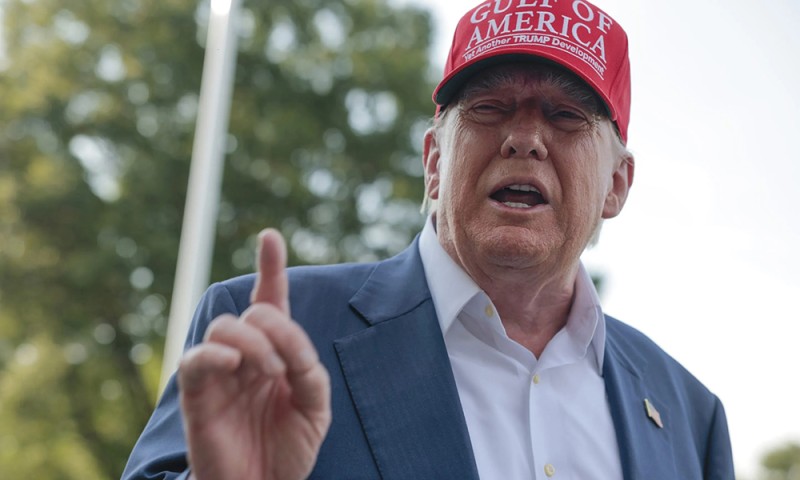
唐纳德·特朗普签署的《大而美法案》(One Big Beautiful Bill Act,OBBBA)于2025年7月正式生效,其中多项重大变革直接惠及合格小型企业(QSBs)及其投资者,其关键举措在于完善合格小型企业股票(QSBS)相关规则。
合格小型企业迎来核心利好
• 融资渠道更畅通:合格小型企业股票优惠政策覆盖范围扩大,提升了投资合格小型企业的吸引力,有望为初创企业与成长期公司拓宽融资渠道。
• 投资者更快获得资金流动性:投资者仅需持股三年便能实现部分收益免税,此举将激励更多人投身早期投资。
• 资质认定标准更宽松:更多企业如今可纳入合格小型企业范畴,尤其是科技、生命科学等资本密集型行业的企业。
• 税收政策长期稳定:永久性减免及更高费用扣除限额,为企业规划和投资营造了稳定环境。
主要修改内容
1. 扩大合格小型企业股票收益豁免范围
• 缩短免税持股期限:如今投资者持有合格小型企业股票满三年便能豁免部分出售收益,而此前最低持股期限为五年。新的豁免时间表如下:
o 持股达3年:50%收益免税
o 持股达4年:75%收益免税
o 持股达5年以上:100%收益免税
• 上调收益豁免额度上限:针对2025年7月4日之后发行的股票,单家企业的收益豁免上限从1000万美元提升至1500万美元,且后续会依据通胀情况进行调整。这一举措使投资者能够豁免更多应税收益,意味着企业能获得更多资本注入,投资者潜在回报也更高。
• 调高企业资质资产上限:合格小型企业公司资产上限从5000万美元提高至7500万美元,同样与通胀挂钩。这一调整使得更多成长型企业能够发行合格小型企业股票以吸引投资。
• 上述变更均适用于2025年7月4日后购入的合格小型企业股票。
2. 永久性及增强型税收抵免
• 合格营业收入(QBI)扣除:针对穿透实体(独资企业、合伙企业、S型公司)的20%合格营业收入扣除规定实现永久化。这为许多小型企业带来了长期稳定的税收预期并降低了实际税率。
• 提高费用扣除限额:根据第179条,小型企业对合格资产进行费用扣除的最高额度从100万美元提升至250万美元,同时上调扣减额成比例渐失门槛并随通胀调整。这使企业能够立即扣除更多资本投资,优化现金流并推动增长。
3. 附加条款
• 遗产税:上调小型企业主的遗产税免税额度,使企业更易于传承给下一代。
• 恢复红利折旧:100%红利折旧政策得以恢复,企业可立即全额扣除新设备和设施的购置成本。
投资者凯文·郭(Kevin Kwok)在X平台指出,诸如加大投资、费用抵扣激励以及税收优惠等政策变动意义重大,企业应考虑重新组建公司以享受相关红利。
尽管有批评者认为,这些利好可能主要集中于高增长型企业及其投资者,但总体而言,这些政策变动被广泛视为对小型企业及其投资者的重大利好。(*)
为撰写本报道,《财富》杂志使用生成式人工智能协助完成初稿。在发布前,编辑已核实信息准确性。
译者:中慧言-王芳
唐纳德·特朗普签署的《大而美法案》(One Big Beautiful Bill Act,OBBBA)于2025年7月正式生效,其中多项重大变革直接惠及合格小型企业(QSBs)及其投资者,其关键举措在于完善合格小型企业股票(QSBS)相关规则。
合格小型企业迎来核心利好
• 融资渠道更畅通:合格小型企业股票优惠政策覆盖范围扩大,提升了投资合格小型企业的吸引力,有望为初创企业与成长期公司拓宽融资渠道。
• 投资者更快获得资金流动性:投资者仅需持股三年便能实现部分收益免税,此举将激励更多人投身早期投资。
• 资质认定标准更宽松:更多企业如今可纳入合格小型企业范畴,尤其是科技、生命科学等资本密集型行业的企业。
• 税收政策长期稳定:永久性减免及更高费用扣除限额,为企业规划和投资营造了稳定环境。
主要修改内容
1. 扩大合格小型企业股票收益豁免范围
• 缩短免税持股期限:如今投资者持有合格小型企业股票满三年便能豁免部分出售收益,而此前最低持股期限为五年。新的豁免时间表如下:
o 持股达3年:50%收益免税
o 持股达4年:75%收益免税
o 持股达5年以上:100%收益免税
• 上调收益豁免额度上限:针对2025年7月4日之后发行的股票,单家企业的收益豁免上限从1000万美元提升至1500万美元,且后续会依据通胀情况进行调整。这一举措使投资者能够豁免更多应税收益,意味着企业能获得更多资本注入,投资者潜在回报也更高。
• 调高企业资质资产上限:合格小型企业公司资产上限从5000万美元提高至7500万美元,同样与通胀挂钩。这一调整使得更多成长型企业能够发行合格小型企业股票以吸引投资。
• 上述变更均适用于2025年7月4日后购入的合格小型企业股票。
2. 永久性及增强型税收抵免
• 合格营业收入(QBI)扣除:针对穿透实体(独资企业、合伙企业、S型公司)的20%合格营业收入扣除规定实现永久化。这为许多小型企业带来了长期稳定的税收预期并降低了实际税率。
• 提高费用扣除限额:根据第179条,小型企业对合格资产进行费用扣除的最高额度从100万美元提升至250万美元,同时上调扣减额成比例渐失门槛并随通胀调整。这使企业能够立即扣除更多资本投资,优化现金流并推动增长。
3. 附加条款
• 遗产税:上调小型企业主的遗产税免税额度,使企业更易于传承给下一代。
• 恢复红利折旧:100%红利折旧政策得以恢复,企业可立即全额扣除新设备和设施的购置成本。
投资者凯文·郭(Kevin Kwok)在X平台指出,诸如加大投资、费用抵扣激励以及税收优惠等政策变动意义重大,企业应考虑重新组建公司以享受相关红利。
尽管有批评者认为,这些利好可能主要集中于高增长型企业及其投资者,但总体而言,这些政策变动被广泛视为对小型企业及其投资者的重大利好。(*)
为撰写本报道,《财富》杂志使用生成式人工智能协助完成初稿。在发布前,编辑已核实信息准确性。
译者:中慧言-王芳
President Donald Trump’s One Big Beautiful Bill Act (OBBBA), signed into law in July 2025, introduces several significant changes that directly benefit Qualified Small Businesses (QSBs) and their investors, primarily through enhancements to the rules around Qualified Small Business Stock (QSBS). Key Benefits for Qualified Small Businesses
• Easier access to capital: The expanded QSBS benefits make investing in QSBs more attractive, likely increasing access to funding for startups and growth-stage companies.
• Faster liquidity for investors: Investors can realize partial tax-free gains after just three years, encouraging more early-stage investment.
• Broader eligibility: More companies now qualify as QSBs, especially those in capital-intensive sectors like technology and life sciences.
• Long-term tax certainty: Permanent deductions and higher expensing limits provide stability for business planning and investment.
Notable changes
1. Expanded QSBS gain exclusion
• Shorter holding periods for tax exclusion: Investors can now exclude a portion of gains from the sale of QSBS after holding the stock for as little as three years, rather than the previous five-year minimum. The new exclusion schedule is:
o 3 years: 50% gain exclusion
o 4 years: 75% gain exclusion
o 5+ years: 100% gain exclusion
• Higher gain exclusion cap: The per-issuer cap on gain exclusion increases from $10 million to $15 million for stock issued after July 4, 2025, with future inflation adjustments. This allows investors to exclude more gains from taxation, meaning more access to capital and higher potential returns.
• Larger company eligibility: The maximum asset threshold for a company to qualify as a QSB rises from $50 million to $75 million, also indexed for inflation. This expansion means that a greater number of growing businesses can issue QSBS and attract investment.
• These changes apply to QSBS acquired after July 4, 2025.
2. Permanent and enhanced tax deductions
• Qualified Business Income (QBI) deduction: The 20% deduction for qualified business income, crucial for pass-through entities (sole proprietorships, partnerships, S corporations), is made permanent. This provides long-term tax certainty and reduces effective tax rates for many small businesses.
• Increased expensing limits: The maximum amount a small business can expense under Section 179 for qualifying property is raised from $1 million to $2.5 million, with a higher phase-out threshold and inflation adjustments. This allows for immediate deduction of more capital investments, improving cash flow and encouraging growth.
3. Additional provisions
• Estate tax: The estate tax exemption for small business owners is increased, making it easier to pass businesses to the next generation.
• Restored bonus depreciation: 100% bonus depreciation is reinstated, which allows businesses to immediately deduct the full cost of new equipment and facilities.
Investor Kevin Kwok noted on X that the changes, such as increased investing and expensing incentives and tax benefits, are so significant that companies should consider reincorporating to reap the benefits.
These changes are widely regarded as a substantial boost for small businesses and their investors, though some critics note that the benefits may be concentrated among higher-growth firms and investors.
For this story, Fortune used generative AI to help with an initial draft. An editor verified the accuracy of the information before publishing.

